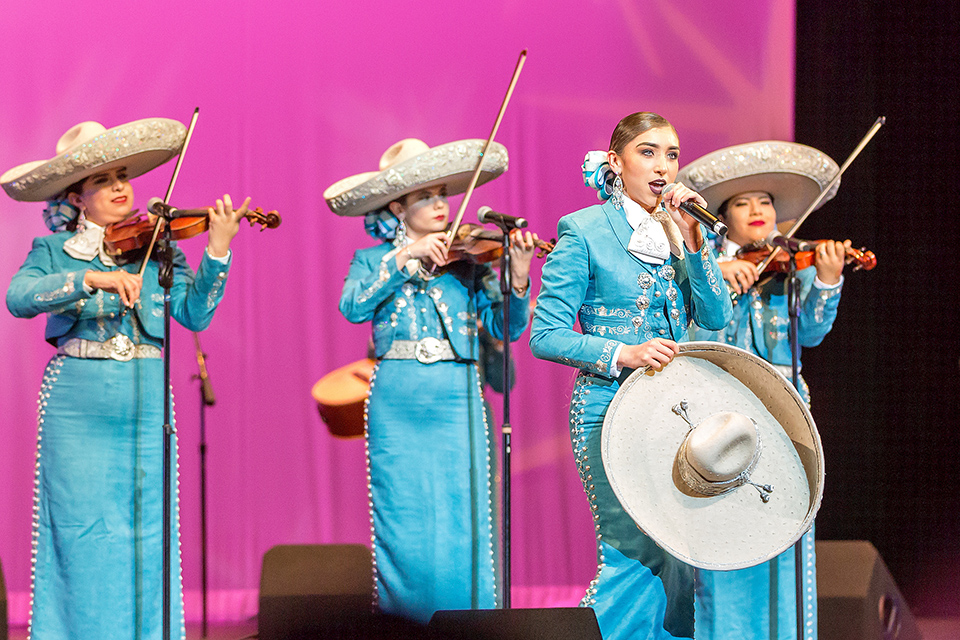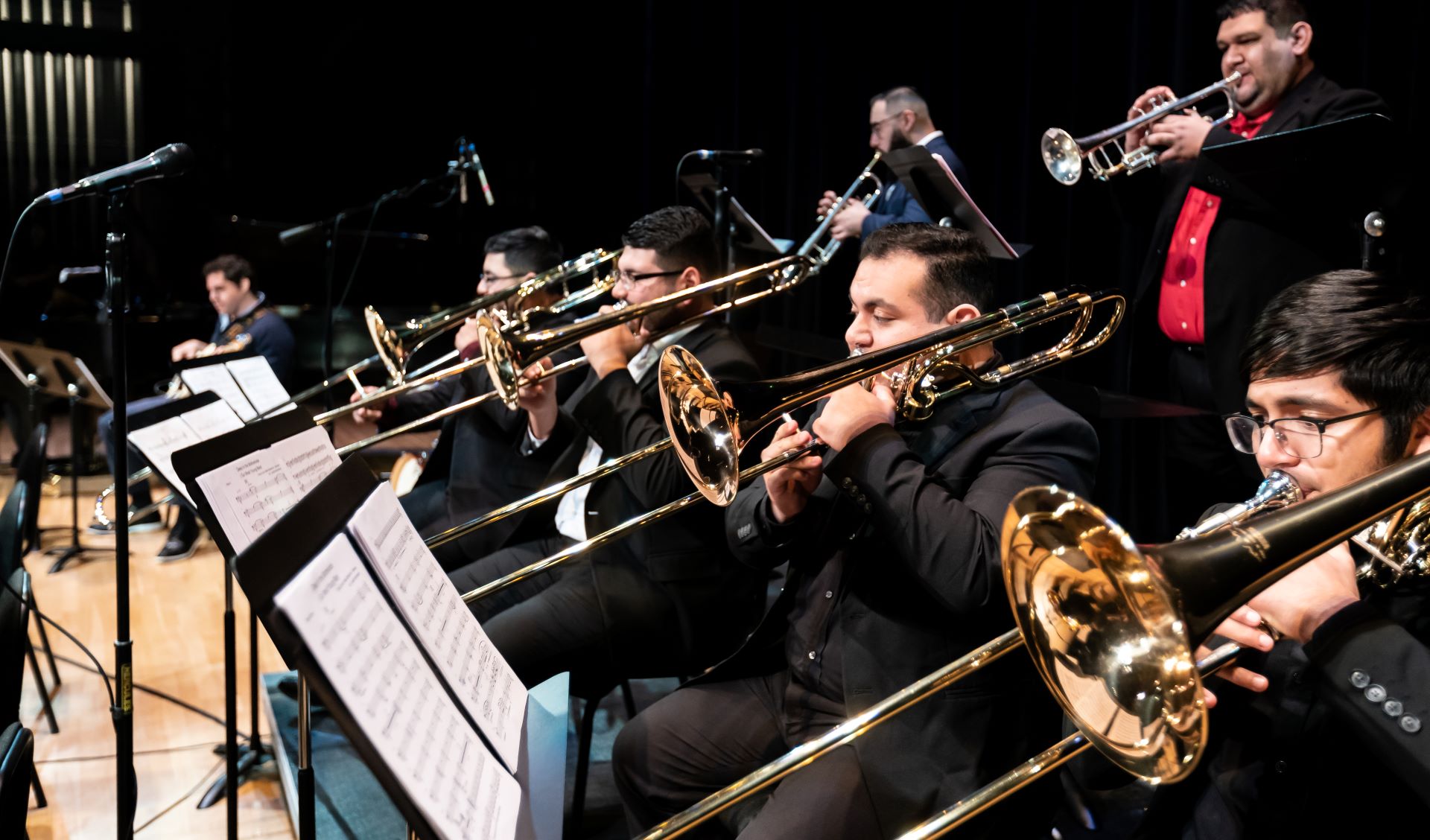Mission
The UTRGV School of Music prepares students to succeed as teachers, performers, and scholars by studying diverse musical styles, genres, and traditions; conducting research; and collaborating with each other as well as with local, national, and global communities. Through extensive community engagement, service learning, and exceptional performance opportunities, we expand the understanding of music, and enrich the cultural life in our local society and beyond.
Vision
To be a leader in the education of musicians through the innovation and sustainable approaches to performance, research, and teaching, in a bilingual and multicultural environment.
Academic Programs
Bachelor's
Music - Teacher Certification (BM)
Bachelor of Music in Music — Teacher Certification
Program Modality: Campus
The Bachelor of Music with Teacher Certification prepares students aspiring to be music educators for careers and certification to teach in elementary and secondary (EC-12) schools.
In this program, you will gain hands-on experience working with expert faculty in ensembles, private lessons, conducting, and music education courses to hone your musical skills in preparation for your future career as a music educator. We offer a variety of concentrations, so whether you hope to nurture the next generation of young musicians as a choral, orchestra, band, or mariachi director, or as an elementary music teacher, we have a path for you! This degree can also lead to graduate study in Music Education, Musicology, Ethnomusicology, Conducting, or Performance.
UTRGV is approved by the State Board of Educator Certification to recommend students who complete all requirements of this degree for teaching certification. Available degree concentrations are listed below.
The School of Music is accredited by the National Association of Schools of Music (NASM).
Concentrations:
Music Composition (BM)
Bachelor of Music in Music Composition
Program Modality: Campus
The Bachelor of Music in Music Composition offers an exciting experience for students who want to dive deep into the world of music composition.
In this program, you will study music theory and composition techniques in an intensive and engaging way. You will get plenty of hands-on experience, composing music for a wide range of instruments and ensembles. The program encourages you to explore and develop your unique musical voice, whether you are into classical, jazz, or electronic.
If you are ready to turn your passion for music into a career, the Bachelor of Music in Music Composition program will help you achieve your goals and make your note in the music world.
Music Technology (BM)
Bachelor of Music in Music Technology
Program Modality: Campus
The Bachelor of Music in Music Technology program is designed to prepare you with the skills and knowledge you need for a successful career in the modern music industry.
Imagine diving into a curriculum that covers everything from music theory and recording techniques to programming languages and sound design. The program will teach you about sound science and how to use cutting-edge technology to capture, create, and manipulate audio!
Courses in this program are as exciting as they are varied. Plus, the program emphasizes hands-on experience. You will get to work with state-of-the-art equipment and software and collaborate on real-world projects, giving you a taste of what it is like to work in the industry. If you are ready to turn your passion for music and technology into a career, this program is an incredible opportunity to do just that.
Performance (BM)
Bachelor of Music in Performance
Program Modality: Campus
The Bachelor of Music in Performance is designed for students who wish to pursue careers as performing musicians and can also be a stepping stone to graduate studies in performance, pedagogy, or other music disciplines. If accepted to the program, you will have the opportunity to develop your artistry with world-class faculty in private lessons and ensembles; hone your performing skills through a variety of performance experiences; and acquire the skills and knowledge in musicianship, music business, and music technology essential for success as a 21st-century musician.
We offer a variety of concentrations (listed below). Connect with our faculty via the School of Music Faculty Directory and ask questions about specific instruments or ensembles. If you are excited to turn your love of music into a performing career, the Bachelor of Music in Performance at UTRGV can help you take that leap!
The School of Music is accredited by the National Association of Schools of Music (NASM).
Concentrations:
Master's
Music (MM)
Master of Music in Music
Program Modality: Campus
The Master's degree in Music provides advanced graduate level study and preparation for musicians interested in music history, theory, and pedagogy beyond the scope of a bachelor's degree in music. Students choose from several concentrations.
The School of Music is accredited by the National Association of Schools of Music (NASM).
Concentrations:
Undergraduate Minors
Undergraduate Certificates
Community
Plan to join us at FESTIBA 2025!! It will be a great workshop, competition and concert!
The University of Texas Rio Grande Valley is excited to announce our annual Music Major for a Day, hosted by the UTRGV School of Music! Music Major for a Day is a chance for high school juniors and seniors to come to the UTRGV campuses in Edinburg or in Brownsville, and live a day in the life of a college music major. On these days, we have activities in place for all band, orchestra, choir, guitar, and piano students. They will have the opportunity to take a tour of campus, go to an academic music class, go to an ensemble rehearsal, hear our students perform, and work with our faculty who specialize on their instrument.
We hope to see you at the UTRGV School of Music Music Major for a Day!
For more information please email teresita.lozano@utrgv.edu.
Youth Orchestra
For the TMEA All State Band Etude Clinics and information, please contact:
Dr. Krista Jobson krista.jobson@utrgv.edu or Dr. Jonathan Guist jonathan.guist@utrgv.edu.
Contact Us
School of Music
Brownsville, BMSLC 2.214
Edinburg, PACB 2.108
music@utrgv.edu
956-882-7768
956-665-3471






